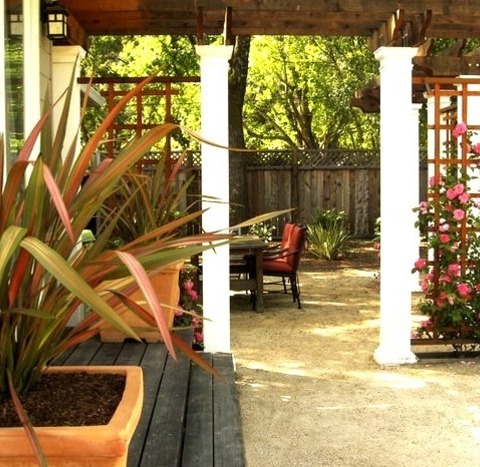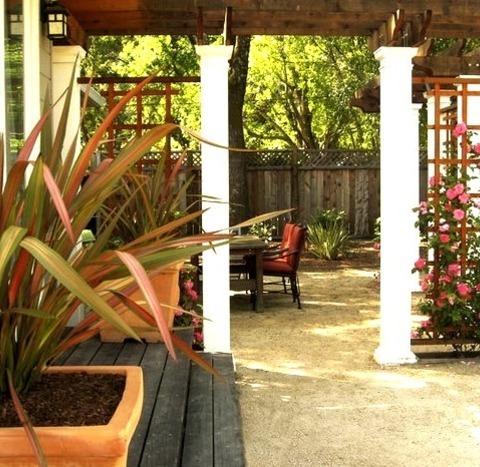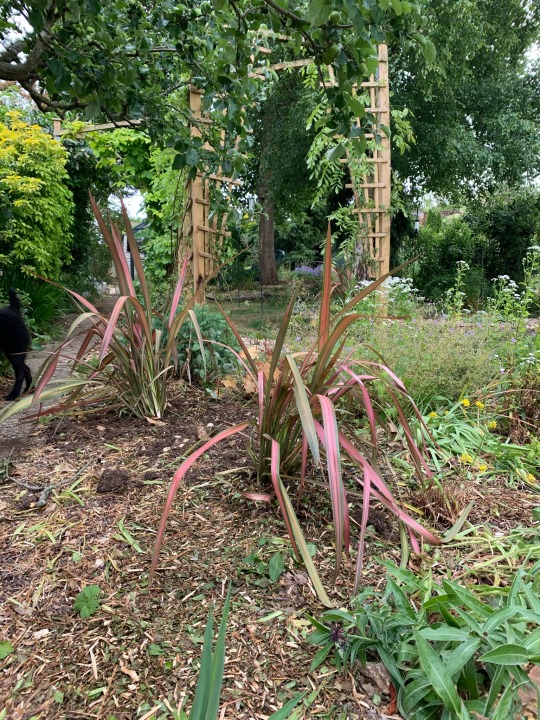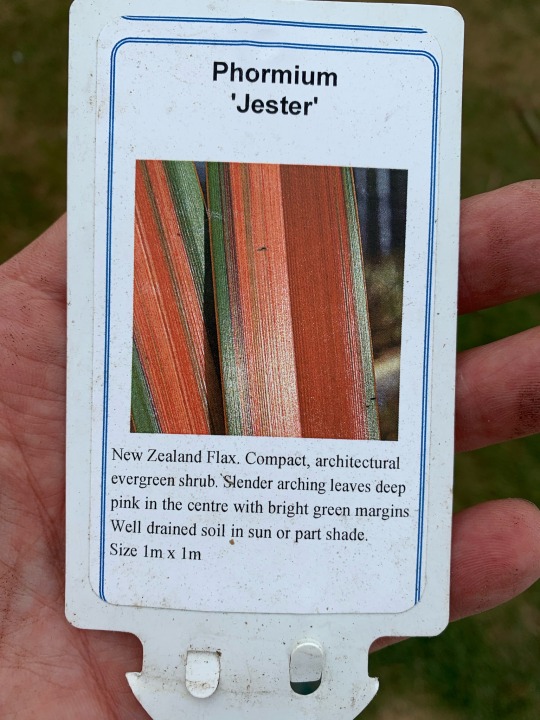#phormium jester
Text
Mediterranean Landscape

Inspiration for a mid-sized mediterranean drought-tolerant and full sun backyard mulch garden path in summer.
#lawn replaced with dg#lawn alternatives#decomposed granite#phormium jester#lawn conversion#stately pergola#low water garden
0 notes
Photo

San Francisco Mediterranean Landscape
Inspiration for a summer mulch garden path in a medium-sized Mediterranean garden that can withstand drought.
0 notes
Text
Pathway San Francisco

Inspiration for a medium-sized, contemporary front yard with concrete pavers and partial sun in the spring.
#leucadendron jester#boulders#lomandra breeze#landscape#phormium#low water plants#japanese maple tree
0 notes
Text



Purchased a Phormium ‘Jester’ today with beautiful pink striped leaves. It cost £35 which I thought was quite expensive, so when I got it home I immediately divided it into three separate plants which is much more cost effective!
Two of them have been planted between the Ninebark and the apple tree, and the third underneath the large silver birch.
Not the best photographs but once they have established I’ll take some better pictures.
0 notes
Text
Brian Minter: Timing in spring is everything
It happens every year, and recent weather swings have certainly exacerbated the problem. When we get 20 degrees C weather in late March and April, many folks who are hungry for early floral colour and fresh food from the garden are equally anxious to get everything growing. But not “everything” can tolerate April’s fickle weather patterns. Making matters worse, most garden retailers of any size are putting tender plants on their shelves … mostly because of consumers’ requests.
Many savvy gardeners have small greenhouses and cold frames and have learned through experience to shelter tender plants and the early hanging baskets and planters they have potted up. Novice gardeners, however, simply don’t know the difference between cold-tolerant and heat-loving plants, and unfortunately many marigolds, begonias, geraniums, tomatoes and peppers end up in a chilly April garden where they quickly go backwards, or worse, die because of exposure to cold, wet conditions.
There are lots of blooming plants that will do well in the cool, early spring temperatures, but most of them tend to peter out in the warmth of late June and the heat of summer. People start looking now for baskets and planters with the expectation that they will last through September, but that’s just not feasible at this time of year.
Violas are traditional early spring colour plants.
In the colour department, a little strategy goes a long way. For containers, establish your anchor or focal plants as a permanent feature and then accessorize with cool-loving colour until late May when you can swap them out for heat lovers. Today, there is an array of beautiful plants that look stunning used as focal pieces. The over-used green spikes of dracaena palms can tolerate some cold, and they now come in a myriad of unique new colours such as burgundy, red and yellow, as well as hot new pinks, limes and stunning tricolours. The new “Dancing” series of cordylines will knock your socks off, especially “Dancing Zumba” and “Dancing Salsa”.
Striking new phormiums (flax) such as “Pink Stripe,” “Jester,” “Evening Glow” and the well-known “Yellow Ribbon,” create lovely displays all summer and well into October, but must come in for winter. If you add in colourful evergreen grasses, such as carex “Evergold,” “Eversheen” and the much-sought-after hot lime “Everillo,” as well as evergreen perennials, such as the new euphorbias, “Ascot Rainbow” and “Shorty,” you have the makings of a beautiful lasting display. Now you’re getting there. One of the new heucheras, available in black, lime, burgundy and purple, will add a vibrant touch, and I love to finish off using cool hardy osteospermums that come in an array of inviting colours from pure whites and bright yellows to rich pinks and purples.
Violas and pansies are the traditional early spring colour spots. The newer “Cool Wave” pansies are nice spill-over plants for containers. The trailing alyssums, called lobularias, are getting better and better, both in habit and colour intensity. I love the variegated foliage of L. “Frosty Knight”.
Many Proven Winners nemesias, such as Sunsatia “Cranberry” and Juicy Fruits “Kumquat” and “Cherries on Ice,” are resilient in cool temperatures and are also somewhat heat-tolerant. They will really spice up your colour at this time of year.
Nemesia Sunsatia ‘Cranberry’ has dramatic colour.
Although the very popular bacopa is used a lot in summer plantings, it’s not the best heat performer. It actually does better in cool conditions. The broader colour range of pinks, purples and whites gives you many options, and folks even use them as ground covers.
Today, with all these varieties at your disposal, you can create stunning planters and garden beds that are suitable for spring temperatures and simply change out the few flowering plants with petunias, begonias and calibrachoas when we shift into our hot summers.
Most of these plants will tolerate a light frost, but depending upon where you live in the province, keep one eye on the night temperatures. If the temperature drops below -4C, use a protective cover such as the white N-Sulate cloth.
Switching to food gardens, there is much that can be planted now. Perennial vegetables, such as rhubarb, asparagus and Jerusalem artichokes, can go in now. All your small fruits, including strawberries and everbearing raspberries, are ready to start growing.
Osteospermums come in an array of vibrant colours.
Perennial herbs, such as parsley, sage, thyme, oregano, marjoram, mint and chives, should be planted anytime now, ready to add unique flavours to all your culinary creations. Hold off on lemongrass, lemon verbena and dill until it gets really warm. Basils should not be set out until night temperatures are 12C or higher.
With some frost protection, all your greens, such as lettuce, spinach, swiss chard and mesclun can go out. Early brassicas, onions, potatoes and peas love the cooler temperatures.
Tomatoes, peppers, cucumbers, squash and beans need the heat, so the May long weekend should be the earliest target date for these heat-lovers. If you wish to grow younger heat-loving plants into large plants to give you a head start in May, you can easily create an outdoor cold frame with a south or west-facing exposure. This works even on a patio or apartment deck.
A little garden planning now will go a long way to get your early colour and early food growing without needing a complete do-over a little further into the season.
Brian Minter: Timing in spring is everything published first on https://weedkillerguide.tumblr.com/
0 notes